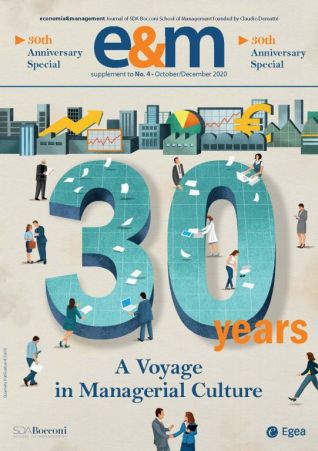E&M
2020/5
Corporate Governance: between Art and Profession
In this editorial, published in 1994 in issue number 1 of Economia&Management , the founder of the magazine addressed the issue of corporate governance as a balance between art and science. Here we find not only Demattè's approach and philosophy, but also one of his main teachings: that managing businesses means understanding collective action, and it is not sufficient to trust only reason, but also sentiment and passion.



